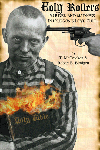Holy Rollers: Murder and Madness in Oregon's Love Cult
by T. McCracken and Robert B. Blodgett
CHAPTER THREE
The Flock
***
LOCAL LORE.
NEWS OF CORVALLIS AND VICINITY TOLD IN BRIEF.
The comings and Goings of People, Social Gossip, Personal Mention and Other Items of Public Interest.
Headline in every issue of the Corvallis Times in 1903
***
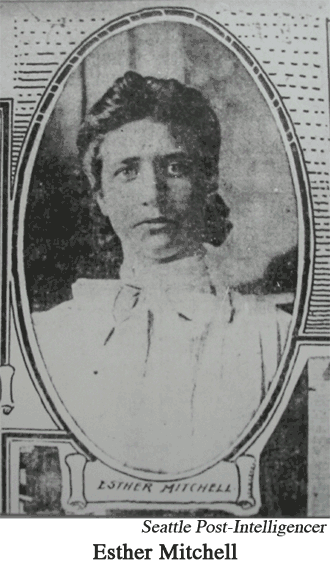 So who were these people,
these God’s Anointed? It would be comforting to think all of them were a bit
off. Who else would mistake hallucinations--they were hallucinations, weren’t
they?--for the voice of God, but someone who was a bit
off? Or at the very least that they came from bad stock. Or had wretched childhoods. It could be disconcerting if they were normal people, people like the rest of
us, intelligent, well-adjusted people from good homes, people of “a sane mind
and a reasonable being.”
So who were these people,
these God’s Anointed? It would be comforting to think all of them were a bit
off. Who else would mistake hallucinations--they were hallucinations, weren’t
they?--for the voice of God, but someone who was a bit
off? Or at the very least that they came from bad stock. Or had wretched childhoods. It could be disconcerting if they were normal people, people like the rest of
us, intelligent, well-adjusted people from good homes, people of “a sane mind
and a reasonable being.”
If any of God’s Anointed could be said to have had wretched childhoods, it would have been the Mitchell sisters, Donna and Esther. In 1894, when Donna was fourteen and Esther was six, their mother, Martha, died of typhoid, and their father, Charles, essentially abandoned them.
Charles Mitchell was described, on the one hand, as a “nothing,” and, on the other, as “a man of strong peculiarities and eccentricities.” He was a Quaker not known for his peaceful ways, a man who “could not argue, or debate, or reason with anyone without flying off the handle.” After his wife died, he joined the Salvation Army, and soon it consumed his every waking thought. He was intoxicated with the Salvation Army, so much that his seven children would have been little worse off had he spent his evenings drinking at a saloon, and his days sleeping off a drunk. Nothing could keep him from his religious devotions--not even taking care of his children, five of whom at the time of his wife’s death were between the ages of six and fifteen. Eventually Charles Mitchell returned to Illinois, where the family had migrated from. He remarried, but he never brought any of his brood out to live with him.
Donna, now twenty-three, was married to Burgess Starr. Burgess, thirty-two, loved Donna very much, saying she was a “model wife and mother” to him and their children: Gertrude, two, and Rachel, a newborn. Burgess also believed in the tenets of Creffield’s church, but he mainly went to Smith Island that summer to fulfill a wood-cutting contract. That was as close as many in Corvallis came to having a vacation--camping while cutting wood or picking hops. Burgess thought he could cut wood while his wife was off begging for forgiveness for her sins. What those sins could be, he couldn’t imagine since, in his mind, she was “a good girl.”
Burgess’s brother, Clarence Starr, had no interest in Creffield’s church, but was on Smith Island that summer helping Burgess fulfill the wood-cutting contract. Clarence’s wife, Hattie Starr (née Hattie Baldwin), accompanied him, as did Una Baldwin, Hattie’s niece.
Esther Mitchell, Donna’s Starr’s youngest sister, was on Smith Island, too. Esther, now fifteen, a piano player for the Salvation Army, was said to not be “in complete harmony with this wicked world.” She was considered to be gentle and kind, but she rarely smiled, had “a far away look in her eyes,” and “a dreamy, absorbed expression.” She was also “given much to silent thought”--especially that summer on Smith Island.
Attie Bray, Burgess and Clarence Starr’s niece, also came to Smith Island. Attie, twenty-two, was one of the first--if not the first--white children born on what had been the Alsea Sub-Agency for the Siletz Indian Reservation. It wasn’t discussed much--at least not in polite society--but Attie’s mother’s family, the Starrs, had been squatters on the Reservation. At the time the reservation was closed to non-Indian settlement. As soon as the area was opened to whites, though, Ira and Georgianah Bray (neé Starr), Attie’s parents, were among the first settlers to begin legitimate homesteading on the central Oregon coast.
Ira Bray was a cruel man--especially around his five children. For example, he would eat candy in front them while telling them they couldn’t have any because they were bad. So even as a child Attie was regularly told that she was a sinner even when she wasn’t. Unlike her father, Attie was sweet and kind, and easily endeared herself to all she met. Some day she hoped to become a schoolteacher, but for now, she worked as a “servant girl.”
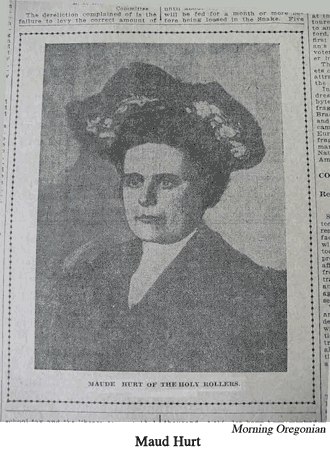 Attie was on Smith Island
with her friend, Rose Seeley. The Seeley children, like the
Mitchell children, had also been abandoned by their father after their
mother died. In the Seeleys’ case, Rose Seeley, now twenty-seven, had assumed
the responsibility of raising her younger siblings--not an easy task for
someone with about a seventh-grade education who, like Attie Bray, worked as a “servant
girl.” Her father, Judson Seeley, a former justice of the peace, had abandoned
his seven children when he--well nobody seems to know exactly what happened to
Judson Seeley. He just wasn’t there one day, and he certainly wasn’t there when
Rose and three of his other children--Edna, twenty-eight and a Salvation Army
Cadet; Wesley, nineteen; and Florence, sixteen--went camping on Smith Island
with Creffield.
Attie was on Smith Island
with her friend, Rose Seeley. The Seeley children, like the
Mitchell children, had also been abandoned by their father after their
mother died. In the Seeleys’ case, Rose Seeley, now twenty-seven, had assumed
the responsibility of raising her younger siblings--not an easy task for
someone with about a seventh-grade education who, like Attie Bray, worked as a “servant
girl.” Her father, Judson Seeley, a former justice of the peace, had abandoned
his seven children when he--well nobody seems to know exactly what happened to
Judson Seeley. He just wasn’t there one day, and he certainly wasn’t there when
Rose and three of his other children--Edna, twenty-eight and a Salvation Army
Cadet; Wesley, nineteen; and Florence, sixteen--went camping on Smith Island
with Creffield.
If any of God’s Anointed could be said to have been a bit off, it would be Maud Hurt. Twenty-three, five-foot-two, with jet black hair, large, expressive and deep blue eyes, Maud was said by Salem’s Daily Capitol Journal to be a “comely looking woman” who talked “very intelligently.”
She was also a “very peculiar girl and hard to understand long before the days of Creffieldism”--or so said her father, O. V. Hurt. He had always assumed her odd manner was somehow the result of the severe typhoid and scarlet fevers she had suffered from as a child. No matter, he still adored her. O. V. adored all of his children. His was “a happy family” he said, “of which love was the keystone.”
“My daughter had always been of a very religious turn of mind,” O. V. said, and “whenever a new religion was presented she invariably put all her soul into the teaching.” Religious turn of mind sounded better than religious fanatic--which she clearly was. At the age of eight--the age of eight!--she was already referred to as “a child wonder” at religious work, an “energetic worker at revival meetings, going among the congregations and pleading with friends and acquaintances to seek the salvation so freely offered.”
“Her chief aim was to become as nearly perfect as a Christian could be,” a friend of hers said. And she wasn’t one of those Christians who preached salvation, and then sinned on the side. “All her life Maud Hurt was kindly and generous, with an even temper and a good disposition,” her friend said. Maud took the teachings of Christianity to heart and led a truly Christian life, always helping those in need. For instance, she could often be found in the homes of people who were ill, caring for their children, doing their wash, and helping with other chores.
When she was fourteen she joined the Salvation Army because she believed it would give her more opportunities to perform good works. But soon after meeting Creffield she left the Army because it was “teaching the Bible in a narrow manner” and she didn’t like its methods for collecting donations.
“It is not right to hold ice cream socials and other special gatherings where money is taken,” Creffield had told her. Might as well be holding out a tin cup while quaffing a few at the saloon or hooting at a burlesque show.
Wanting to insure a place on the Holy Roll in Heaven for her family, Maud invited them all to come Smith Island. Her father, head salesman at Kline’s Mercantile, stayed at home, but her mother, Sarah Hurt (neé Starr) went, as did her sister, Mae. Mae was sixteen and five years earlier had won a “fine guitar” for having the nation’s second highest sales rate of The War Cry, the Salvation Army’s newspaper.
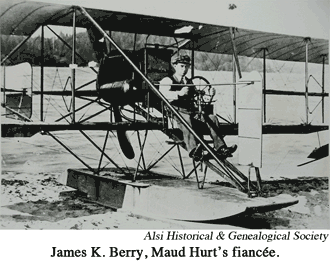 Maud was engaged to James
Berry. James didn’t camp on Smith Island that summer, but, mostly out of
curiosity, visited frequently. James, twenty-four, the son of a United Brethren
minister, was a successful businessman who owned the Bicycle Hospital, a
bicycle store and repair shop with the best selection of bicycles in Corvallis.
Initially he was rather taken with Creffield’s ideas and lent him money to get
his church rolling.
Maud was engaged to James
Berry. James didn’t camp on Smith Island that summer, but, mostly out of
curiosity, visited frequently. James, twenty-four, the son of a United Brethren
minister, was a successful businessman who owned the Bicycle Hospital, a
bicycle store and repair shop with the best selection of bicycles in Corvallis.
Initially he was rather taken with Creffield’s ideas and lent him money to get
his church rolling.
It would be comforting to think that all of Creffield’s followers were peculiar or had wretched childhoods, that they were not normal people--people like the rest of us. It’s therefore disconcerting to learn that this wasn’t the case. It’s disconcerting because it means that normal people--people like the rest of us--can fall victim to someone like Creffield.
“Respectable, modest and refined women and girls,” was the way Will H. Morris, an attorney who got involved in the Creffield case, described many of God’s Anointed. “From old neighbors, who had known them from childhood, I learned that prior to their coming in contact with Creffield and his pernicious teachings and blighting influence, all of these women and girls were from families of good reputation, respected by all who knew them, and that not a breath of reproach or a taint of suspicion had ever been directed toward their reputation for virtue and womanly conduct.”
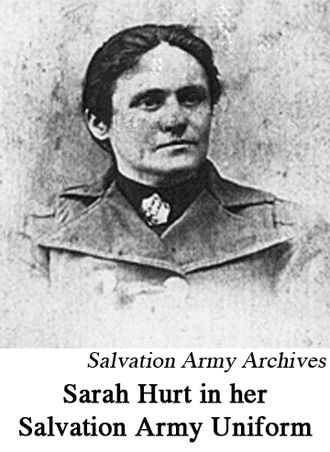 And not all of God’s Anointed
were women. One of Creffield’s most ardent followers was Sampson Levins. Sampson,
thirty-five, the second youngest of nine children had been a private in the
Spanish-American War, and was now a logger. He had had “a deep interest in the
Methodist Church,” he said, but when it failed to meet his “heart’s desire,” he
joined Creffield’s Church. “Some people think ours [Creffield’s] is a strange
doctrine, but John Wesley was attacked by mobs when he
founded the Methodist Church,” Sampson said, adding, “of course, the church is
not now as he [John Wesley] left it.”
And not all of God’s Anointed
were women. One of Creffield’s most ardent followers was Sampson Levins. Sampson,
thirty-five, the second youngest of nine children had been a private in the
Spanish-American War, and was now a logger. He had had “a deep interest in the
Methodist Church,” he said, but when it failed to meet his “heart’s desire,” he
joined Creffield’s Church. “Some people think ours [Creffield’s] is a strange
doctrine, but John Wesley was attacked by mobs when he
founded the Methodist Church,” Sampson said, adding, “of course, the church is
not now as he [John Wesley] left it.”
Another male follower of Creffield was Lee Campbell. Lee was engaged to Sophie Hartley, an attractive student at Oregon Agriculture College studying history. Before going to Smith Island, neither she or Lee were known to have been of a “religious turn of mind.” In fact, their previous religious affiliation is unknown--Methodist, perhaps. Maybe Sophie’s decision to go camping on Smith Island that summer had nothing to do with religious beliefs, but youthful rebellion. Maybe she was doing something wild and spontaneous to upset Papa. Papa was Lewis Hartley, one of the richest men in Corvallis.
Sophie’s mother, Cora Hartley, came to Smith Island that summer too. Why is also not known. It was certainly a mystery to her husband. Why would his wife, forty-four, he wondered, choose to spend the summer living in a wigwam instead of the magnificent new ten-room house he’d just had built for her?
He certainly had no time to spend on Smith Island that summer as he was busy in the Bohemia Mining District managing his claim, the Hole in the Ground. It was different if he opted to live in primitive conditions--it was still sort of the wild west in the Bohemia Mining District--he was a man, after all. That’s what men did. Make sacrifices and work hard to provide a good home for their wives and children.
And he, at forty-eight, provided better than most. He’d come far since 1892 when, en route to Alaska, he was shipwrecked off the Oregon coast. Now his company, Hartley’s Great Eastern Mining Company, had just filed articles of incorporation with capital stock of $1,250,000. One million, two hundred and fifty thousand dollars!
While he was slaving away in the mines--so to speak--he expected his wife to be home taking care of their two children. Except that their two children--Sophie, twenty, and Warren, twenty-one--were grown-ups going to college. They were about to embark on lives of their own. What was Cora supposed to do from now on? Sit home alone and bored in their magnificent new ten-room house? Not if she could help it.
Another of God’s Anointed who came from a well-to-do family was Mollie Sandell, one of the first of Creffield’s followers to leave the Salvation Army to join his church. The Sandells were Methodists who owned considerable property in Seattle. Mollie, now twenty-two, a slight woman with gray eyes and light-colored hair, had left the Methodist Church two years earlier to join the Salvation Army. She had recently reached the rank of Captain when she resigned her commission to follow Creffield.
Mollie’s twenty-six-year-old sister, Olive, another former Methodist turned Salvation Army soldier, also came to Smith Island, as did Mollie’s fiancée, Frank Hurt. Frank Hurt, Maud’s twenty-one-year-old brother, was a friendly, tall, handsome, fair-haired, blue-eyed young man. He too had belonged to the Methodist Church until joining the Salvation Army--it’s not known whether the Methodists begrudged the Salvation Army the members it wooed away. Frank was also a devoted follower of Creffield’s before that summer, and left not only the Salvation Army to go to Smith Island, but his job as well. “Our religion [Creffield’s religion] is to help one another,” he said as explanation. He, like others in his family, wanted to do good works, and he felt he would have more opportunities to do so by following Creffield than by toiling as a shipping clerk at Ainsworth Dock in Portland.
“Our religion is to help one another,” Frank Hurt may have said, but “our religion means the restoration of all things,” is what Creffield said when everyone finally gathered together on Smith Island. “The restoration of the world will soon come,” he said. “The seals mentioned in Revelation will soon be broken and curses and plagues will visit the earth. The world will be destroyed by fire and there will be a new world in which nothing but peace will reign. There will be no sin. It will be the same as in the Garden of Eden. Everything will be the same as at the beginning of the world.”
As if that weren’t news enough, Creffield also announced: “I am now Joshua, the Holy Prophet, and at some future time will become Elijah, the Restorer.” His work, he said was “to lead the twelve tribes of Israel back to Jerusalem, where the restoration of all things will take place, and the millennium will dawn on earth.”
“Creffield, our leader, is an apostle,” Frank Hurt said in awe. “The same as those mentioned in the Bible.” Frank may have thought Creffield was like an apostle, but Creffield thought of himself as being more like Jesus Christ.
Little is known about Creffield’s early years--like Jesus Christ’s. It’s not known when he was born--probably sometime around 1873. Or where he was born--probably somewhere in Germany. Or to whom he was born--possibly to a well-off family. Or what his education was--possibly some studies for the priesthood. Or when he immigrated to America--probably around his twentieth birthday. Or why he immigrated--possibly to avoid military service.
At the time he gathered with his followers on Smith Island, Creffield was probably in his thirties--about the same age Jesus Christ was when He began to gather his followers.
It was time to get the followers’--the flocks’?--heads spinning again before they began questioning his appointment as an apostle, before the remark “Joshua Creffield, our leader is an apostle” was changed from a statement of awe to a one of skepticism: “Joshua Creffield . . . our leader. . . is an apostle?!”
***
Have you ever felt the power Of the Pentecostal
fire,
Burning up all carnal nature, Cleansing out all base
desire,
Going thro’ and thro’ your spirit, Cleansing all its
stain away;
Oh I’m so glad to tell you It is for us all today.
Jesus offers this blest cleaning Unto all His
children dear,
Fully, freely purifying, Banishing all doubt and
fear.
It will help you, oh my brother, When you sing and
when you pray
He is waiting now to give it. It is for us all
today.
From the Reverend Knapp’s Bible Songs of Salvation and Victory
![]() Chapter 2: Creffield's Preachings
Chapter 2: Creffield's Preachings
![]() Chapter 4: The Holy Rollers Roll on Kiger Island
Chapter 4: The Holy Rollers Roll on Kiger Island
***
More Photos of the Holy Rollers
***
Life in Corvallis in the early 1900s
Think You Can't be Lured into a Cult? Think Again.
***
Chapters from
Holy Rollers: Murder & Madness in Oregon's Love Cult
Part 1: The Seduction
Chapter 1: Trust Me, Brothers And Sisters
(Life Before Creffield [B.C.])
Chapter 2: God, Save Us From Compromising Preachers
(Creffield's Preachings)
Chapter 3: The Flock
(Profiles of the Holy Rollers Were)
Chapter 4: The Holy Rollers
(Things Start to Get Wild on on Kiger Island)
Chapter 5: Housecleaning
(There's a Sacrificial Bonfire)
Chapter 6: Community Concerns
(Officers Visit)
Chapter 7: Esther, The Chosen One
(Creffield Plans to Marry 16-Year- Old)
Chapter 8: Tar and Feathers
(The Men of Corvallis Act)
Chapter 9: Sane People Don’t Go Bareheaded
(Holy Rollers are Committed to the Asylum)
Chapter 10: More Beast Than Man
( Creffield is Arrested)
Chapter 11: God Will Plead Creffield's Case
(Creffield in Court)
Chapter 12: Scandal
(Shocking Testimony at the Trial)
Chapter 13: Calm Before the Storm
(The Holy Rollers Resume their Lives)
Chapter 14: Giving Up The Ghost
(Men are Gunning for Creffield)
Part Two: The People V. Creffield
Chapter 16: The Widow Creffield
Chapter 19: An Inherited Streak of Insanity
Part Three: The Madness
Chapter 23: Seeking Reconciliation
Chapter 24: Another Holy Roller Page One Murder
Chapter 25: What Can Papa Do For You?
Chapter 26: Human Life is Too Cheap In This Community
Chapter 30: The Final Chapter
(What Happened to Everyone Afterwards)
The Epilogue
(Heaven's Gate)
Newspaper Articles about Creffield & the Holy Rollers
1897-1903: B.C. (Before Creffield)
October to December 1903:Holy Rollers Burn Furniture & Pets
January to March, 1904: Holy Rollers Tarred and Feathered
April to June 1904: Holy Rollers are Committed to the Asylum
July 1904: Creffield is Found & Arrested
September 1904: Creffield's Trial
April 1906: Men are Gunning For Creffield
May 1906: Creffield is Murdered, Murderer is Considered a Hero
May 1906: Holy Rollers Found Starving Near Heceta Head
June 1906: George Mitchell's Trial Begins
July 1906: Hurt Testifies of Debauched Wife and Debased Sisters
July 1906: Esther Mitchell Kills Her Brother
August to October 1906: Seattle Prepares for another Big Trial
November 1906: Maud Hurt Creffield Commits Suicide
April 1909-August 1914: Esther Leaves the Asylum
1953 Stewart Holbrook's Murder Without Tears
1951Startling Detective Magazine, Nemesis of the Nudist High Priest
***
